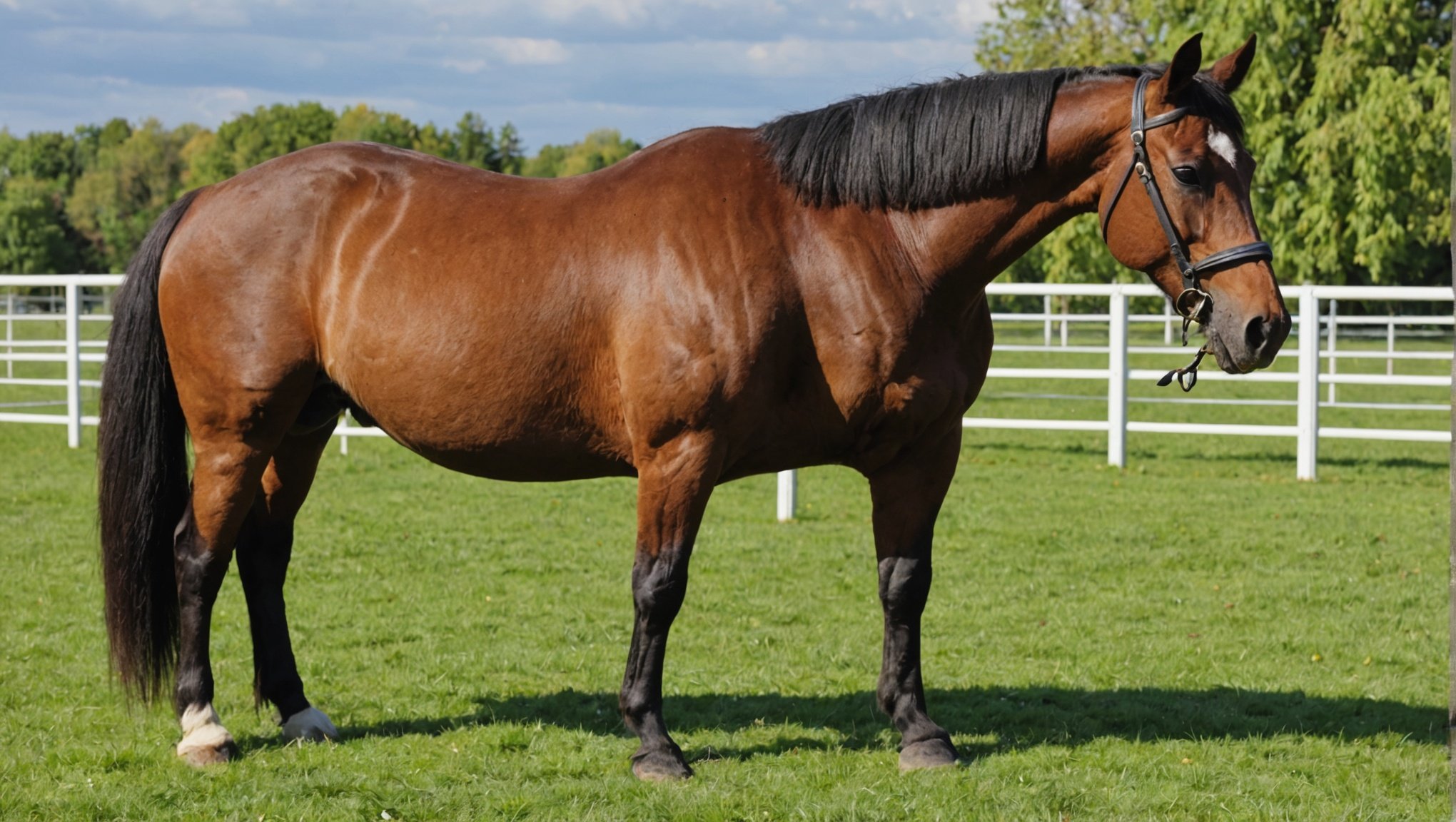The Ultimate Guide to Choosing the Best Bedding for Horses with Sensitive Skin
When it comes to the comfort and health of your horse, the bedding in their stable is more than just a convenience; it’s a crucial aspect of their overall well-being. For horses with sensitive skin, the right bedding can make all the difference between a comfortable and healthy living environment, and one that exacerbates skin issues. Here’s a comprehensive guide to help you choose the best bedding for your equine friend.
Understanding the Needs of Horses with Sensitive Skin
Horses with sensitive skin can be prone to a variety of issues, including sweet itch, mud fever, and rain scald. These conditions can be exacerbated by the wrong bedding, so it’s essential to choose materials that are gentle and non-irritating.
Also read : Mastering Loose Leash Walking: Top Strategies for Training Your Dog
Common Skin Issues in Horses
- Sweet Itch: This is an allergic reaction to the saliva of midges and other biting insects. It can cause intense itching and skin irritation, especially around the mane, tail, and belly areas. Using bedding that minimizes dust and allergens can help alleviate this condition[1].
- Mud Fever: This is a bacterial infection that occurs when the skin is exposed to wet and muddy conditions. Bedding that keeps the horse dry and clean is crucial in preventing mud fever[5].
- Rain Scald: Similar to mud fever, rain scald is caused by prolonged exposure to wet conditions. It leads to skin lesions and can be painful for the horse. Proper bedding can help keep the horse dry and reduce the risk of rain scald.
Types of Bedding Materials
There are several types of bedding materials available, each with its own set of advantages and disadvantages. Here are some of the most common types:
Wood Shavings
Wood shavings are a popular choice for horse bedding due to their absorbency and cost-effectiveness.
In parallel : Ultimate Guide to Successfully Socializing Your Puppy with Other Pets: Expert Tips and Best Practices
- Pros: Wood shavings are generally inexpensive and easy to find. They are also good at absorbing moisture, which helps keep the stable dry.
- Cons: Some wood shavings can be dusty, which may exacerbate respiratory issues in horses. Additionally, certain types of wood, like cedar, can be toxic to horses[4].
Straw
Straw is another common bedding material that has its own set of benefits.
- Pros: Straw is less dusty than wood shavings and can provide better cushioning. It is also a good insulator, keeping the stable warm in the winter and cool in the summer.
- Cons: Straw can be more expensive than wood shavings and may not absorb moisture as well. It also requires more frequent changing to keep the stable clean[1].
Hemp Bedding
Hemp bedding is gaining popularity due to its unique properties.
- Pros: Hemp bedding is dust-free and highly absorbent. It is also eco-friendly and breaks down easily, making it a great choice for horses with delicate skin[4].
- Cons: Hemp bedding can be more expensive than traditional options and may be harder to find.
Wood Pellets
Wood pellets are a modern alternative to traditional bedding materials.
- Pros: Wood pellets are highly absorbent and produce less dust than wood shavings. They are also cost-effective in the long run because they can be composted and reused.
- Cons: Wood pellets can be more expensive initially and may require special equipment to break them down into a usable form[4].
How to Choose the Best Bedding for Your Horse
Choosing the right bedding involves considering several factors, including the health needs of your horse, the climate, and your personal preferences.
Consider the Health Needs of Your Horse
For horses with sensitive skin, it’s crucial to choose bedding that is hypoallergenic and minimizes dust.
- Dust-Free Bedding: Opt for bedding materials like hemp or wood pellets that are known for being dust-free. This can help reduce respiratory issues and skin irritations[4].
- Moisture Absorption: Ensure the bedding material can absorb moisture effectively to keep the stable dry and prevent conditions like mud fever and rain scald[5].
Climate Considerations
The climate in your area can also influence your choice of bedding.
- Cold Climates: In colder climates, bedding materials that provide good insulation, such as straw or wood shavings, can help keep the stable warm.
- Wet Climates: In wet climates, it’s essential to use bedding that can absorb moisture well and keep the stable dry. Wood pellets or hemp bedding might be more suitable in these conditions[5].
Practical Tips for Using Bedding Effectively
Here are some practical tips to help you use bedding effectively and ensure your horse’s comfort:
Regular Cleaning
Regular cleaning of the stable is essential to maintain hygiene and prevent health issues.
- Daily Cleaning: Remove soiled bedding daily and replace it with fresh material.
- Deep Cleaning: Perform a deep clean of the stable at least once a week, disinfecting all surfaces and removing any leftover bedding[5].
Bedding Depth
The depth of the bedding is also important for your horse’s comfort.
- Adequate Depth: Ensure the bedding is deep enough to provide cushioning and insulation. A depth of about 4-6 inches is recommended[1].
Combining Bedding Materials
Sometimes, combining different bedding materials can provide the best results.
- Mixing Shavings and Straw: Mixing wood shavings with straw can provide a good balance between absorbency and cushioning.
- Using Rubber Matting: Adding rubber matting under the bedding can help keep the horse dry and comfortable, especially in wet conditions[5].
Detailed Comparison of Bedding Materials
Here is a detailed comparison of the common bedding materials:
| Bedding Material | Absorbency | Dust Level | Cost | Eco-Friendliness | Health Benefits |
|---|---|---|---|---|---|
| Wood Shavings | High | High | Low | Medium | Good insulation |
| Straw | Medium | Low | Medium | High | Good cushioning |
| Hemp Bedding | High | Low | High | High | Hypoallergenic |
| Wood Pellets | High | Low | Medium | High | Cost-effective |
Quotes and Insights from Experts
- “Hemp bedding is known for its high absorbency and dust-free nature, making it an excellent choice for horses with delicate skin,” says an expert from DenverSeredlion[4].
- “Regular cleaning of the stable is crucial to maintain hygiene and prevent health issues. Daily removal of soiled bedding and weekly deep cleaning can make a significant difference,” advises a veterinarian.
Additional Tips for Horse Care
In addition to choosing the right bedding, here are some additional tips to help care for your horse’s skin and overall health:
Use of Fly Rugs
Fly rugs can help protect your horse from biting insects and reduce the risk of sweet itch.
- Choose the Right Fly Rug: Opt for a fly rug that is breathable and provides good coverage. Ensure it fits well to prevent chafing and skin irritation[1].
Grooming and Riding Gear
The right grooming and riding gear can also help protect your horse’s skin.
- Jodhpurs and Breeches: Wear jodhpurs or breeches that are comfortable and do not chafe your horse’s skin.
- Grooming Tools: Use grooming tools like curry combs, brushes, and sponges that are gentle on the horse’s skin[1].
Choosing the best bedding for your horse with sensitive skin is a critical decision that can significantly impact their comfort and health. By understanding the different types of bedding materials, their pros and cons, and incorporating practical tips into your care routine, you can create a stable environment that is both comfortable and healthy for your equine companion.
Remember, the health and well-being of your horse are paramount, and the right bedding is just the beginning. Regular cleaning, proper grooming, and the use of protective gear like fly rugs all contribute to a holistic approach to horse care. With the right knowledge and tools, you can help your horse thrive and enjoy a happy, healthy life.











